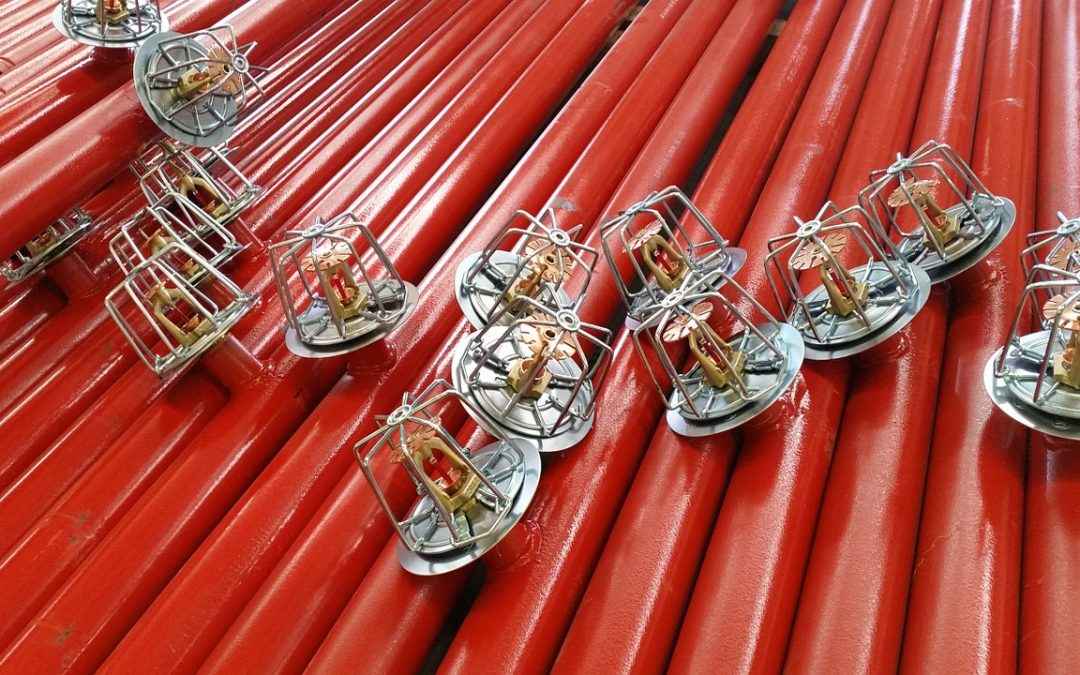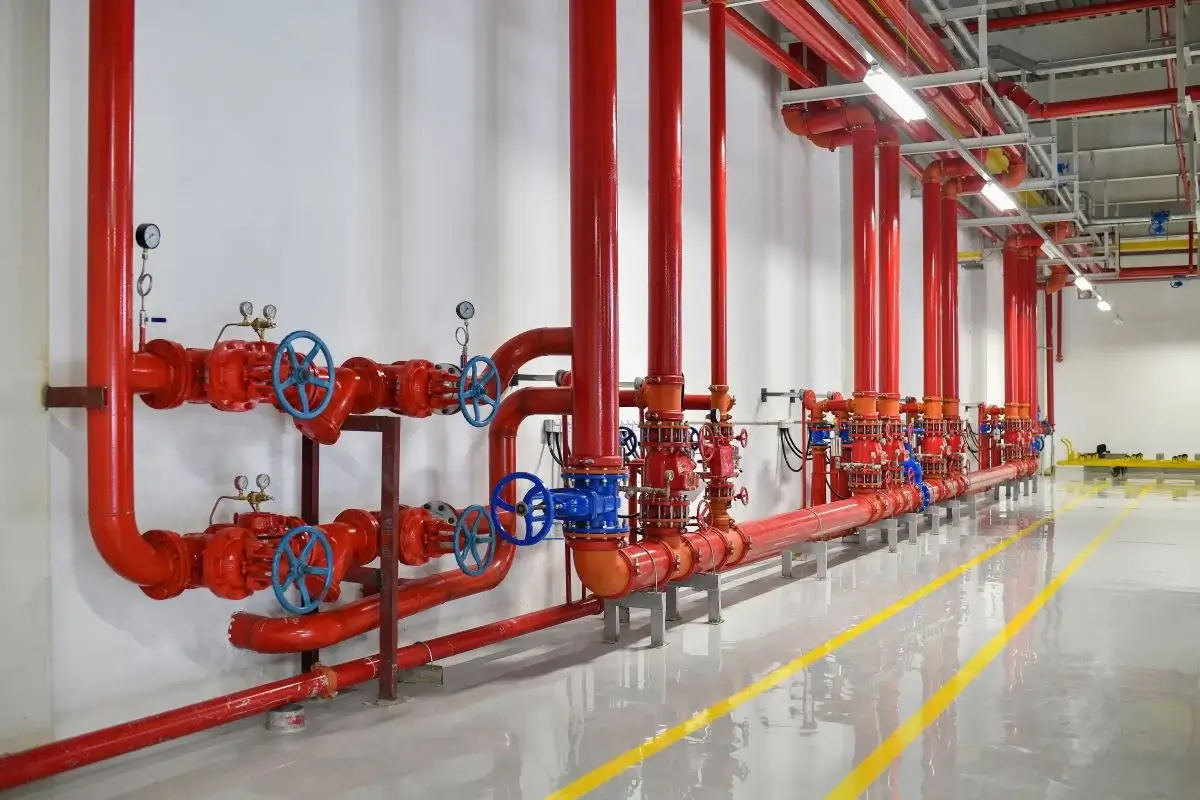Table of Contents
Send us a message

What is a Fire Sprinkler System?
A fire sprinkler system is a network of pipes, valves, and sprinkler heads designed to detect and suppress fires in buildings. An active fire protection measure helps control and extinguish fires by releasing water or other extinguishing agents when a fire is detected. The system is typically installed throughout a building and is connected to a reliable water source, such as a dedicated water supply or the building’s main water line.
Types of Fire Sprinkler Systems
Wet Pipe Systems:
The most common type of sprinkler system is where water is constantly present in the pipes, ready to be discharged upon activation of a sprinkler head.
Dry Pipe Systems:
Designed for areas prone to freezing temperatures, these systems keep pipes filled with pressurised air or nitrogen. Water enters the pipes when a sprinkler head is activated, preventing freezing.
Pre-action Systems:
Ideal for environments sensitive to accidental water discharge, these systems require both fire detection and sprinkler head activation before water is released into the pipes.
Deluge Systems:
Primarily used in high-hazard areas, all sprinkler heads remain open. When a fire is detected, a deluge valve opens, releasing water through all heads simultaneously to rapidly suppress fires.
Foam Sprinkler Systems:
Combining water and foam concentrate, these systems are effective in suppressing flammable liquid fires. The foam solution is discharged onto the fire, creating a foam blanket to smother the flames.
contact us now
if you need Any Assistance
We’re available to look after your electrical emergency 24h a day.
Applications of fire sprinkler systems
- Residential Buildings (homes, apartments, condominiums)
- Commercial Buildings (offices, retail stores, warehouses)
- Industrial Facilities (manufacturing plants, chemical storage)
- Healthcare Facilities (hospitals, clinics, nursing homes)
- Educational Institutions (schools, colleges, universities)
- Cultural Institutions (museums, art galleries, libraries)
- Data Centers (computer systems, server rooms)
- Hospitality and Entertainment Venues (hotels, theatres, restaurants)
- Transportation Hubs (airports, train stations, bus terminals)
- Warehouses and Storage Facilities (logistics, distribution)
Fire Suppression Systems
Fire suppression systems are meticulously engineered to proactively extinguish or manage fires using alternative methods to traditional water-based sprinkler systems. They incorporate a variety of specialised extinguishing agents and techniques tailored to effectively suppress fires in diverse settings. By deploying these systems, prompt action can be taken to mitigate fire hazards, safeguard lives, protect property, and minimise the detrimental impact of fire incidents.

Types of Fire Suppression Systems
Clean Agent Systems:
Utilise gaseous agents like FM-200 or Novec 1230 to extinguish fires by removing heat and interrupting the chemical reaction. They are safe for occupied spaces and leave no residue.
Carbon Dioxide (CO2) Systems:
Discharge high-pressure CO2 gas to displace oxygen, suffocating the fire. Effective for flammable liquid and electrical fires, commonly used in server rooms and industrial settings.
Foam Systems:
Create a foam blanket by mixing water with foam concentrate to separate the fuel source from oxygen and cool the fire. Effective for flammable liquid fires, often used in refineries and aircraft hangars.
Dry Chemical Systems:
Use dry powder agents like ABC or BC powder to interrupt the chemical reaction of the fire. Suitable for class A, B, and C fires, widely used in commercial and industrial settings.
Water Mist Systems:
Disperse fine water droplets through high-pressure nozzles to cool the fire and displace oxygen. Versatile for various fire types, commonly found in healthcare facilities and sensitive environments.
Aerosol Systems:
Release ultra-fine solid particles or aerosols that chemically suppress fires by inhibiting the chain reactions of combustion. Compact and efficient, used in electrical cabinets and machinery spaces.
Inert Gas Systems:
Displace oxygen with inert gases like IG-55 or IG-541 to reduce oxygen concentration below the level required for combustion. Preserve valuable assets, often used in museums and archives.

Applications of Fire Suppression Systems
Clean Agent Systems: Data centres, server rooms, telecommunication facilities, control rooms.
Carbon Dioxide (CO2) Systems: Engine rooms, industrial facilities, paint spray booths, and power generation plants.
Foam Systems: Refineries, hangars, warehouses, petrochemical facilities.
Dry Chemical Systems: Commercial kitchens, manufacturing plants, paint booths, electrical rooms.
Water Mist Systems: Healthcare facilities, heritage buildings, hotels/residential buildings, industrial processes.
Aerosol Systems: Electrical cabinets, machinery spaces, marine applications, vehicle engine compartments.
Inert Gas Systems: Museums/archives, data centres, laboratories, server rooms.
